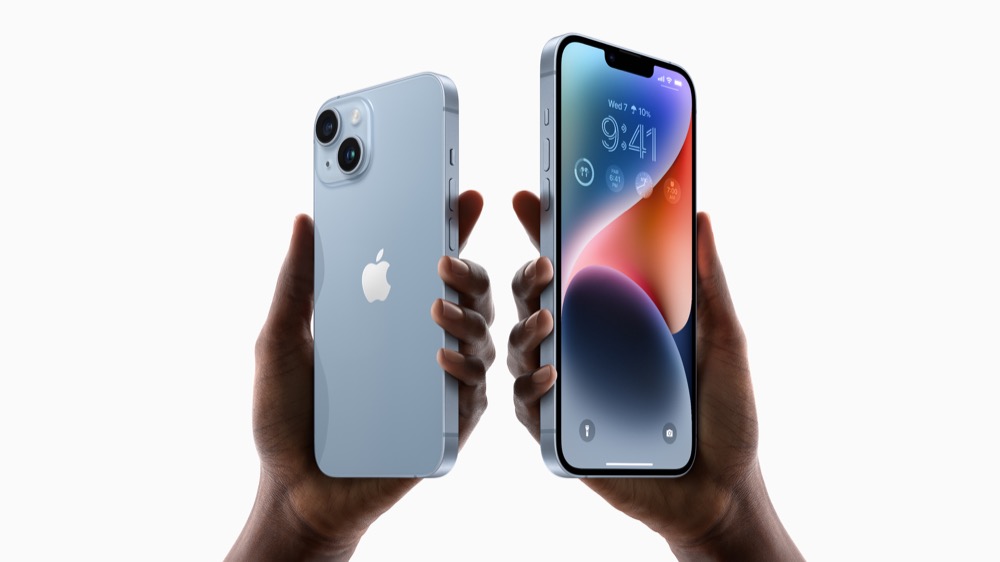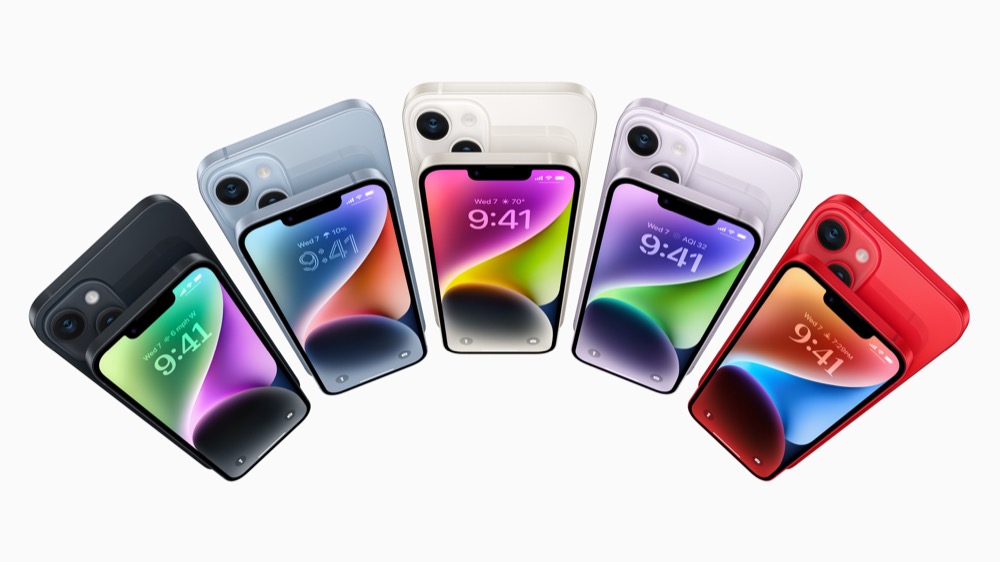What’s new in iPhone 14 and iPhone 14 Plus?

As it confirmed at its Far Out event, Apple has sadly slaughtered the iPhone mini in the face of apparent lack of interest, but has “gone large” on iPhone 14, including an impressively large 6.7-inch iPhone 14 Plus. Both new phones include the A15 Bionic chip with a 5-core GPU, while the Pro models proffer an A16 processor.
What Apple said
“Our customers rely on their iPhone every day, and iPhone 14 and iPhone 14 Plus introduce groundbreaking new technologies and important safety capabilities. With the new, larger 6.7-inch display on iPhone 14 Plus, users can enjoy more content onscreen when browsing the web and even more text,” said Greg Joswiak, Apple’s senior vice president of Worldwide Marketing.
“Both phones have a powerful new Main camera with a huge leap in low-light performance, advanced connectivity capabilities with 5G and eSIM, and the incredible performance of A15 Bionic, which helps enable even better battery life. All of this, tightly integrated with iOS 16, makes iPhone more essential than ever.”
What’s new in iPhone 14 and iPhone 14 Plus?
You can pick up an iPhone in a larger 6.7-inch size along with the existing 6.1-inch design. In both cases, you’ll also find a f new dual-camera system, Crash Detection, Emergency SOS via satellite, and the best battery life on iPhone.
There are some key improvements Apple focused attention on. These include the inevitable improvements in the camera, but also include new safety capabilities such as Crash Detection and Emergency SOS via satellite, a first in the industry.

What about the camera improvements?
The imaging improvements take a great deal of power from the built in intelligence of the device, which really has become an incredibly sophisticated digital camera you carry everywhere. Apple is talking about new 12MP Main and front TrueDepth cameras, the Ultra Wide camera for unique perspectives, and the Photonic Engine — an enhanced image pipeline that enables the computer/iPhone to improve pictures as you take them. The latter improves mid- to low-light performance for photos across all cameras: up to 2x on the Ultra Wide camera, 2x on the TrueDepth camera, and 2.5x on the new Main camera. It achieves this by applying computational enhancements to the image.

There are numerous other ways the cameras are better. The Main camera, for example has a larger ƒ/1.5 aperture and 1.9 µm pixels, enabling better detail and motion freezing, less noise, faster exposure times, and sensor-shift optical image stabilisation. A new Action mode for incredibly smooth-looking video that adjusts to significant shakes, motion, and vibrations, even when video is being captured in the middle of the action. Cinematic mode, now available in 4K at 30 fps and 4K at 24 fps and you get end-to-end Dolby Vision HDR.

Crash Detection and Emergency SOS via Satellite
Emergency SOS via satellite combines custom components integrated with software to allow antennas to connect directly to a satellite, enabling messaging with emergency services when outside of cellular or Wi-Fi coverage.
This can take a few minutes depending on the connection, but Apple has tried to prepare for this by creating an automated set of simply situation analysis questions that may, if the user can answer them in the situation they are in, help expedite deliver of help.
The initial questionnaire and follow-up messages are then relayed to centers staffed by Apple‑trained specialists who can call for help on the user’s behalf. This breakthrough technology also allows users to manually share their location over satellite with Find My when there is no cellular or Wi-Fi connection. Emergency SOS via satellite will be available to users in the US and Canada in November, and the service will be free for two years.

Crash Detection relies on the new dual-core accelerometer capable of detecting G-force measurements of up to 256Gs. Developed across several years, the feature can identify if a car crash takes place and automatically dial emergency services when a user is unconscious or unable to reach their iPhone. Advanced Apple-designed motion algorithms trained with over a million hours of real-world driving and crash record data provide even better accuracy. When a crash is detected, the emergency services call interface will appear on Apple Watch, while the call is placed through iPhone.

What about the display?
The display is much improved. Think Super Retina XDR displays with OLED technology supporting 1,200 nits of peak HDR brightness, a 2,000,000:1 contrast ratio, and Dolby Vision. iPhone 14 and iPhone 14 Plus also feature the durable Ceramic Shield front cover —tougher than any other smartphone glass — and are protected from common spills and accidents with water and dust resistance. Apple Fitness+ will be available for all iPhone users starting this fall.

What about the network?
The device is obviously a 5G iPhone, but Apple is also encouraging adoption of eSIM to replace physical SIM cards. The latter means you can provision your devices with a network provider more easily, and allows for multiple cellular plans on a single device. iPhone 14 and iPhone 14 Plus remove the SIM tray in the US.
What else can we discuss?
iPhone 14 and iPhone 14 Plus will be available in midnight, blue, starlight, purple, and (PRODUCT)RED1 finishes. Pre-orders begin Friday, September 9, with availability for iPhone 14 beginning Friday, September 16, and availability for iPhone 14 Plus beginning Friday, October 7.

What’s the cost?
From $799 for iPhone 14 and from $899 for iPhone 14 Plus. The iPhone 14 Pro costs from $999 while the iPhone 14 Pro Max sets you back $1,099. Some Phone 13 devices remain available , including the $500 iPhone 13 mini and $699 iPhone 13. It seems worth pointing out the iPhone SE costs from $429. In other words, you can spend between $400 and $1,100-plus to get an iPhone, which means the experience is available to many.
Apple also continues to extend the number of ways in which we can pay in instalments. For example, right now you can get an iPhone 14 for $33.29 (US) a month for 24 months or $799 (US) before trade-in, and iPhone 14 Plus for $37.45 (US) a month for 24 months.
Please follow me on Twitter, or join me in the AppleHolic’s bar & grill and Apple Discussions groups on MeWe.




